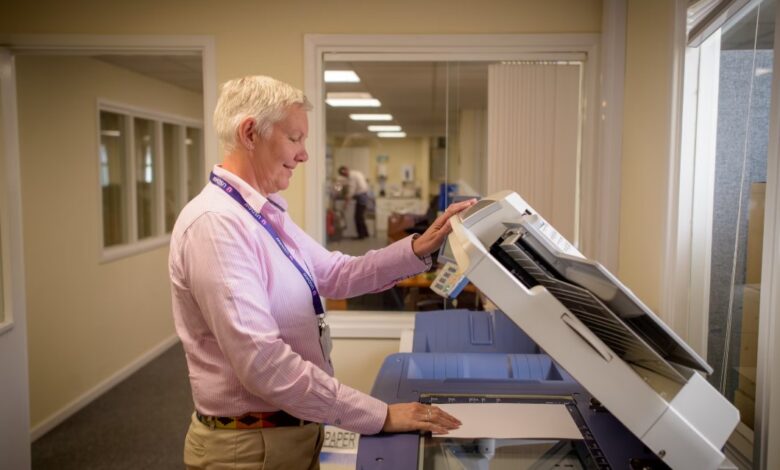Choosing the Right Medical Document Scanning Services

In today’s rapidly evolving healthcare landscape, the efficient management of patient information has become a critical component of quality care delivery. Medical document scanning services have emerged as essential solutions for healthcare providers seeking to modernize their operations while maintaining compliance with increasingly stringent regulations. The digitization of medical records represents not just a technological upgrade but a fundamental shift in how healthcare organizations manage information, collaborate between departments, and ultimately serve their patients.
Why Medical Document Scanning Services Matter More Than Ever
The Rising Volume of Healthcare Data
Healthcare organizations are experiencing an unprecedented surge in documentation requirements. From detailed patient histories and treatment plans to insurance forms and regulatory compliance documents, the volume of paperwork has expanded dramatically. Modern diagnostic technologies generate extensive imaging data, while comprehensive treatment approaches require more detailed documentation than ever before. This information explosion has pushed traditional paper-based systems beyond their practical limits.
Challenges of Paper-Based Systems
Paper-based record systems present numerous operational challenges that directly impact patient care. Physical storage limitations force difficult decisions about what to keep on-site versus in remote storage, leading to retrieval delays that can affect clinical decision-making. Physical documents are vulnerable to damage from water, fire, or simple deterioration over time. Perhaps most concerning, paper records lack the security controls necessary to track who accessed what information and when, creating significant compliance vulnerabilities.
Push Toward Digitization in Health and Business Operations
The healthcare industry has recognized these challenges, driving substantial momentum toward comprehensive digitization. Electronic Medical Record (EMR) and Electronic Health Record (EHR) systems have become standard, while telehealth and remote patient monitoring depend entirely on digital information accessibility. This shift enables healthcare providers to access critical information anywhere, anytime, while supporting data-driven approaches to both patient care and business operations.
What to Expect From a Medical Document Scanning Service
End-to-End Workflow Overview
Professional medical document scanning services typically follow a structured workflow designed to maintain document integrity throughout the conversion process. This begins with careful document intake and preparation, where records are organized, staples and bindings removed, and documents assessed for special handling needs. The scanning process itself employs high-speed equipment with quality controls to ensure accuracy. Following scanning, documents undergo indexing where metadata is applied to make future retrieval intuitive. Finally, the delivery phase includes transferring digital files to your systems and, if requested, securely destroying or returning original documents.
Compliance and Data Protection Standards
When dealing with healthcare information, compliance isn’t optional. Quality medical record scanning services must adhere to HIPAA requirements in the United States, PHIPA in Canada, or relevant healthcare privacy regulations in other jurisdictions. This means maintaining a documented chain of custody throughout the scanning process, employing staff with appropriate clearances, and implementing physical and digital security measures that prevent unauthorized access during conversion.
Formats, Integration, and Accessibility
Modern scanning services produce more than just basic image files. They can deliver documents in various formats including searchable PDFs with embedded text recognition, structured data files, and formats specifically designed for EMR/EHR integration. Cloud storage options provide secure accessibility from multiple locations, while appropriate encryption ensures data remains protected both in transit and at rest.
Key Factors to Consider Before Choosing a Provider
Healthcare Industry Experience
The healthcare sector has unique documentation requirements that differ significantly from general business documents. Providers with specific medical record experience understand the importance of capturing patient identifiers consistently, preserving document relationships, and handling specialized document types like EKGs or fetal monitoring strips. This specialized knowledge can dramatically impact the usability of your digitized records.
Technology and Equipment Used
The quality of scanning equipment directly affects the clarity and usefulness of your digital documents. High-resolution scanners capture fine details that might be crucial for diagnostic notes or hand-written observations. Advanced Optical Character Recognition (OCR) technology transforms static images into searchable text, while intelligent document recognition can automatically categorize different form types. Ask potential providers about their technology investments and refreshment cycles.
Turnaround Time and Scalability
Healthcare operations rarely allow for extended downtime while records are being processed. Evaluate prospective scanning partners on their capacity to handle your volume without sacrificing quality or timeline commitments. The ability to scale up quickly during peak conversion periods without compromising security protocols is particularly valuable during system transitions or facility moves.
Client References and Proven Results
Experienced medical document scanning services should readily provide references from similar healthcare organizations. Case studies demonstrating successful large-scale conversions, compliance with tight deadlines, and seamless integration with common EMR systems provide valuable insights into a provider’s capabilities beyond marketing materials.
Red Flags to Watch Out For
Lack of Certifications or Compliance Documentation
Any medical document scanning service unable to provide clear documentation of their HIPAA compliance measures, security certifications, or staff training protocols represents a significant risk. These aren’t merely administrative details – they’re essential safeguards for your patients’ private information and your organization’s legal protection.
Poor Quality Assurance Processes
Quality scanning involves more than just feeding documents through machines. Robust QA processes include multiple checkpoints for image quality, accurate indexing, and complete document capture. Providers should clearly articulate their error detection and correction protocols, including how they handle exception cases.
Overpromising Without Transparency
Be wary of providers offering unusually low flat rates without detailed scopes of work or those making promises that seem too good to be true regarding turnaround times or accuracy rates. The most reliable partners provide transparent pricing structures with clearly defined deliverables and realistic timelines based on your specific document types and volumes.
Questions to Ask Before Signing Any Agreement
“What’s your experience with [EMR system]?”
Your scanning provider’s familiarity with your specific EMR system can significantly impact integration success. Ask about previous implementations with your software and what challenges they typically encounter.
“How do you ensure data privacy and secure disposal?”
Request specific details about security measures throughout the process, from transportation and handling to final disposition of physical records after scanning.
“Can I test a small batch before committing to full volume?”
A pilot project offers valuable insights into a provider’s processes and output quality before committing to a full-scale conversion.
“Who retains ownership of scanned files?”
Ensure your contract clearly specifies that you maintain complete ownership of all digitized files and that the provider has no rights to your data.
Comparing In-House Scanning vs. Outsourcing
Equipment, Staffing, and Time Requirements for In-House
In-house scanning requires significant upfront investment in equipment, software, and trained personnel. Organizations must consider not just scanner costs but also computers, storage infrastructure, and document preparation areas. Staff must be properly trained in handling medical records while maintaining compliance protocols.
Outsourcing Benefits: Focus, Expertise, and Accountability
Outsourcing to specialists allows healthcare organizations to focus on their core mission – patient care – while leveraging the expertise and economies of scale that dedicated scanning providers offer. Contract terms can establish clear accountability for deliverables and timelines.
Hidden Costs on Both Sides
The true cost of in-house scanning extends beyond equipment to include maintenance, software licenses, staff training, quality control, and the opportunity cost of space dedicated to scanning operations. Outsourcing has its own hidden considerations, including document preparation time, shipping costs, and potential integration challenges.
Making the Transition: Planning for a Smooth Digitization Process
Preparing Your Team and Records
Successful digitization begins well before scanning starts. Organizing records logically, removing duplicates, and clearly labeling priority documents streamlines the conversion process. Equally important is preparing your team by communicating the benefits of digitization and addressing concerns about workflow changes.
Setting Realistic Timelines
The scope of your digitization project should determine your approach. For large archives, a phased conversion focusing first on active patients or recent records may provide the best balance of immediate benefit and manageable disruption. Complete record conversion typically takes longer than initially estimated, so building buffer time into project plans is advisable.
Training for New Access Methods
Even the best-digitized records provide limited value if staff struggle to find what they need. Comprehensive training on new retrieval systems, search techniques, and digital workflow processes ensures your investment translates into improved efficiency.
Final Thought: A Strategic Move Toward Better Care and Efficiency
Implementing professional medical document scanning services represents far more than an administrative change – it’s a strategic infrastructure investment that fundamentally transforms information accessibility. When approached thoughtfully, digitization creates a foundation for improved patient safety through better information access, faster clinical decision-making, and more efficient operations. The right scanning partner becomes a valuable ally in your organization’s digital transformation journey, making selection decisions worthy of careful consideration rather than hasty price comparisons.
By evaluating potential partners based on healthcare experience, technical capabilities, security protocols, and proven results, healthcare organizations can confidently navigate the transition to fully digital records while maintaining compliance and enhancing patient care.



